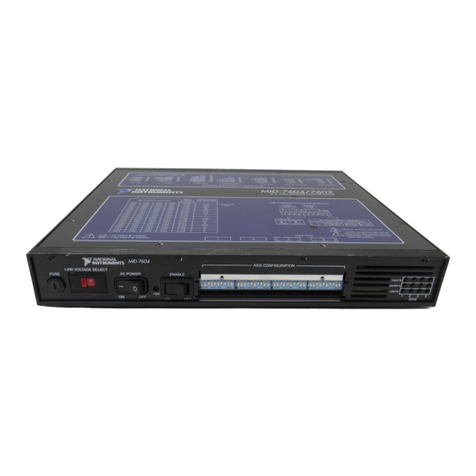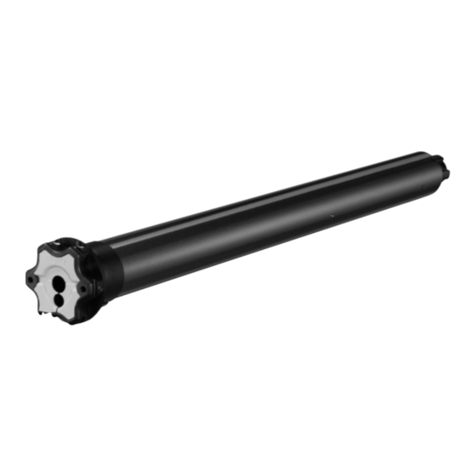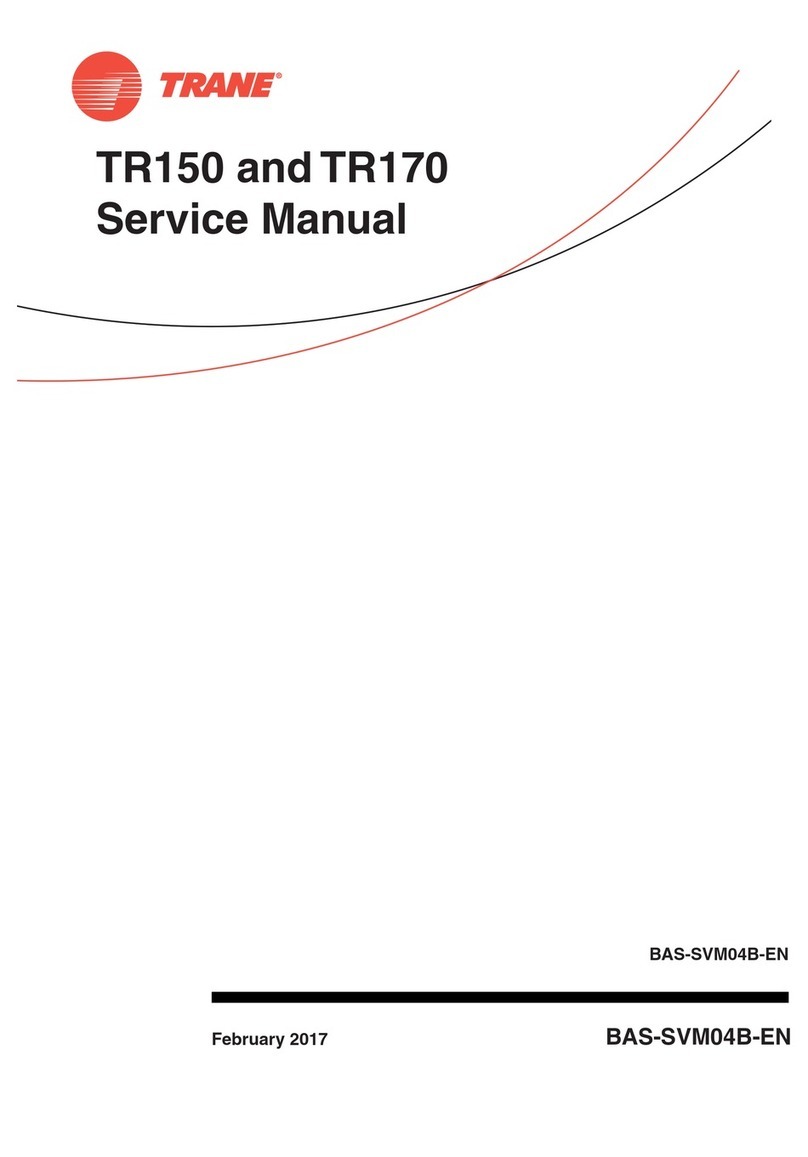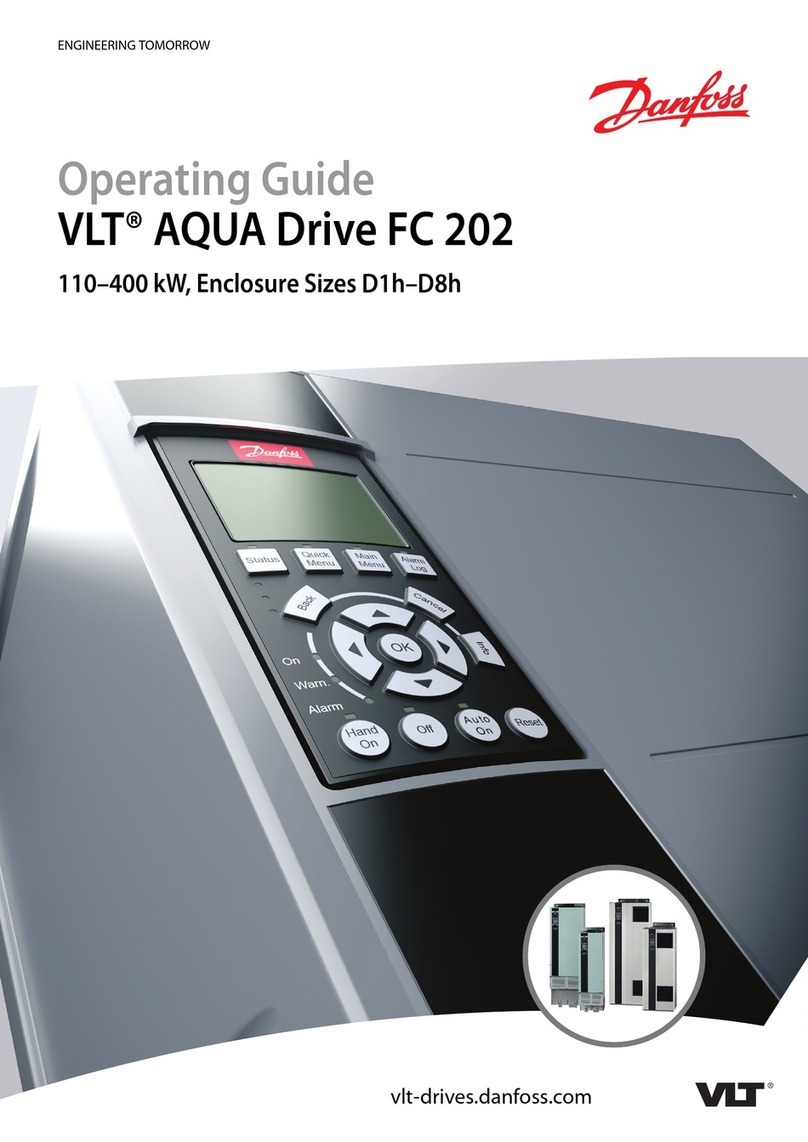Leister DRIVE User manual

DRIVE
Leister Technologies AG
Galileo-Strasse 10
CH-6056 Kaegiswil/Switzerland
Tel. +41-41662 74 74
Fax +41-41662 74 16
www.leister.com
CZ
NTR PL H
DGB FEINL
S

CZ
N
TR
PL
H
2
Deutsch Bedienungsanleitung 3
Englisch Operating Instructions 10
Français Instructions d’utilisation 17
Espanõl Instrucciones de funcionamiento 24
Italiano Istruzioni d’uso 31
Nederland Gebruiksaanwijzing 38
Svenska Bruksanvisning 45
Norsk Bruksanvisning 52
Česky Návod k obsluze 59
Türkçe Kullanım kılavuzu 66
Polski Instrukcja obsługi 73
Hungary Használati utasítás 80
D
GB
F
E
I
NL
S

Anwendung
Leister TRIAC DRIVE bestehend aus
– Antriebseinheit DRIVE
– Heissluft-Gebläse TRIAC AT oder TRIAC ST
– Stützträger
– Andrückrolle
– Überlappschweissdüse
– Handgriff
• Durch die Antriebseinheit DRIVE wird das Überlappschweissen mit dem Kompaktgerät TRIAC DRIVE speziell im
Dachbau und Tunnelbau vereinfacht.
• Halbautomatisches Überlapp-Schweissgerät TRIAC DRIVE ist für den vertikalen und horizontalen Einsatz geeignet.
• Schweissen von thermoplastischen Kunststoffen sowie auch einzelnen Elastoplasten In Form von:
– Dichtungsbahnen
– Folien
– Fugenbänder
– beschichteten Geweben
3
Leister DRIVE
Leister TRIAC DRIVE:
Bedienungsanleitung TRIAC AT oder TRIAC ST und
DRIVE vor Inbetriebnahme aufmerksam lesen und
zur weiteren Verfügung aufbewahren.
DRIVE
TRIAC AT
TRIAC ST
Bedienungsanleitung (Original-Bedienungsanleitung)
D

4
Lebensgefahr beim Öffnen des Gerätes da, spannungsführende Komponen-
ten und Anschlüsse freigelegt werden. Vor dem Öffnen des Gerätes Netzstecker
aus der Steckdose ziehen.
FI-Schalter beim Einsatz des Gerätes auf Baustellen ist für den Personen-
schutz dringend erforderlich.
Nennspannung,die auf dem Gerät angegeben ist, muss mit der Netzspannung
übereinstimmen.
Bei Netzausfall Heissluftgebläse ausfahren.
Gerät vor Feuchtigkeit und Nässe schützen.
FI
230
120
Warnung TRIAC DRIVE
Vorsicht TRIAC DRIVE
Feuer- und Explosionsgefahr bei unsachgemässem Gebrauch von Heissluftgeräten,
besonders in der Nähe von brennbaren Materialien und explosiven Gasen.
Verbrennungsgefahr! Überlappschweissdüse nicht in heissem Zustand berühren.
Gerät abkühlen lassen.
Heissluftstrahl nicht auf Personen oder Tiere richten.
Gerät an eine Steckdose mit Schutzleiter anschliessen. Jede Unterbrechung des
Schutzleiters innerhalb oder ausserhalb des Gerätes ist gefährlich!
Nur Verlängerungskabel mit Schutzleiter verwenden!
Gerät muss beobachtet betrieben werden.Wärme kann zu brennbaren Materiali-
en gelangen, die sich ausser Sichtweite befinden.
Gerät darf nur von ausgebildeten Fachleuten oder unter deren Aufsicht
benützt werden. Kindern ist die Benützung gänzlich untersagt.

5
Technische Daten
Konformität
Leister Technologies AG, Galileo-Strasse 10, CH-6056 Kaegiswil/Schweiz bestätigt, dass dieses Produkt in
der von uns in Verkehr gebrachten Ausführung die Anforderungen der folgenden EU-Richtlinien erfüllt.
Richtlinien: 2006/42
2014/30
2014/35
2011/65
Harmonisierte Normen: EN ISO 12100, EN 55014-1, EN 55014-2, EN 61000-6-2, EN 61000-3-2,
EN 61000-3-3, EN 62233, EN 60335-1, EN 60335-2-45, EN 50581
Kaegiswil, 03.11.2017
Bruno von Wyl, CTO Christoph Baumgartner, GM
Entsorgung
Elektrogeräte, Zubehör und Verpackungen sollen einer umweltgerechten Wiederverwertung
zugeführt werden. Nur für EU-Länder: Werfen Sie Elektrogeräte nicht in den Hausmüll!
Typ DRIVE
Spannung V~ 230 120
Leistung W 100 100
Frequenz Hz 50/60
Antrieb m/min. 0.5 – 3 stufenlos
Masse mm 250 × 165 × 88, Handgriff ø 63
Gewicht kg 2.3 mit 3m Kabel
Konformitätszeichen 2
Sicherheitszeichen 3
Schutzklasse I 1
Anschlussspannung nicht umschaltbar!
Technische Daten zu Heissluft-Gebläse siehe Bedienungs-Anleitung TRIAC AT oder TRIAC ST!
Technische Änderungen vorbehalten

6
Gerätebeschreibung Leister DRIVE
1Netzanschlussleitung Stecker
2Netzanschlussleitung Kupplung
3Netzschalter
4Potentiometer für
Schweissgeschwindigkeit
5Antriebseinheit
6Halterung für Heissluft-Gebläse
7Zwei Einstellschrauben für Halterung
8Stützträger zweifach
9Stützträger einfach
10 Vier Befestigungsschrauben für
Stützträger
11 Andrückrolle
12 Befestigungsschraube für
Andrückrolle
13 Heissluft-Gebläse TRIAC AT oder TRIAC ST
14 Befestigungsschraube für Heissluft-Gebläse
15 Handgriff
16 Überlappschweissdüse
17 Befestigungsschraube Überlappschweissdüse
18 Geräteablage
Gerätebeschreibung von Heissluft-Gebläse siehe Bedienungsanleitung TRIAC AT oder TRIAC ST
1
2
5
16
9
10
3
4
6
13
17
7
11
14
15
8
18
12

7
Betriebsbereitschaft Leister DRIVE
•
Vor Inbetriebnahme Netzanschlussleitung (1), Netzanschlussleitung Kupplung (2) und Stecker sowie Verlänge-
rungskabel auf elektrische und mechanische Beschädigung überprüfen
• Je nach Bedarf Andrückrolle, Düse, Handgriff und Stützrolle montieren.
• Montage von Zubehör
– Handgriff (15) auf Antriebseinheit (5) auf die gewünschte Stellung schieben.
Durch Drehen, Handgriff (15) im Uhrzeigersinn befestigen.
– Stützträger zweifach (8) oder Stützträger einfach (9) mit vier Befestigungsschrauben (10) an
Antriebseinheit (5) montieren.
– Andrückrolle (11) mit Befestigungsschraube (12) montieren.
– Heissluft-Gebläse TRIAC AT oder TRIAC ST (13) in die Halterung für Heissluft-Gebläse (6) einschie-
ben. Heissluft-Gebläse muss so eingeschoben werden, dass ein Abstand zwischen Schutzrohrkante und
Halterung für Heissluft-Gebläse (6) 10 mm beträgt (siehe Detail A).
– Befestigungsschraube (14) anziehen.
– Überlappschweissdüse (16) aufschieben.
• Einstellung Stützträger auf Materialstärke (Detail B).
– Vier Befestigungsschrauben Stützträger (10) lösen.
– Teilstück des Schweissmaterials zwischen Antriebseinheit (5) und Stützträger zweifach (8) oder
Stützträger einfach (9) einschieben.
– Stützträger zweifach (8) oder Stützträger einfach (9) bis zum Schweissmaterial schieben.
– Die vier Befestigungsschrauben (10) anziehen.
– Schweissmaterial entfernen.
– Kontrolle der vorgenommenen Einstellung siehe Detail C.
• Einstellung Überlappschweissdüse (Detail D).
– Überlappschweissdüse (16) parallel zur Andrückrolle (11) ausrichten .
– Befestigungsschraube Überlappschweissdüse (17) anziehen.
– Einstellschrauben für Halterung (7) lösen.
– Durch Bewegung des Heissluft-Gebläses (13), Überlappschweissdüse (16) parallel zum verschwei-
ssenden Material ausrichten (Detail F). Um Winkelfehler zu vermeiden, muss der Stützträger zweifach (8)
oder Stützträger einfach (9) und die Andrückrolle zusammen mit dem zu verschweissenden Material analog
Schweissablauf positioniert werden.
– Einstellschrauben für Halterung (7) anziehen.
6
14
10 mm
Schutzrohrkante
Detail A
811
10
5
Schweiss-
material
Detail B Detail D
1 mm
1116
Detail C
8 11
Schweissmaterial

8
Gerät an Nennspannung anschliessen. Nennspannung, die auf dem Gerät angegeben ist, muss mit
der Netzspannung übereinstimmen. Bei Netzausfall Heissluftgebläse ausfahren.
• Inbetriebnahme Heissluft-Gebläse Leister TRIAC AT oder TRIAC ST
(siehe separate Bedienungsanleitung):
– Einstellung Temperatur mit Potentiometer
– Netzschalter einschalten
– Aufheizzeit ca. 4 min.
• ACHTUNG: TRIAC DRIVE in Stand-by Position auf
ablage (18) legen (siehe Bild).
Feuerfeste Unterlage verwenden
• Netzschalter (3) EIN
– Je nach Folie oder Dichtungsbahn und Witterungseinflüssen die Schweissgeschwin-
digkeit mit Potentiometer (4) einstellen.
Probeschweissung Leister DRIVE
•
Überlapp-Schweissgerät Leister TRIAC DRIVE in das überlappgelegte
Schweissmaterial einfahren und durch
Handgriff (15) oder Antriebseinheit (5) gleichmässig andrücken. Schweissvorgang beginnt.
•
Schweissnaht kontrollieren: Schweisswulst/Fügeweg (Detail G). Bei Bedarf
Schweissgeschwindigkeit mit
Potentiometer (4) oder Schweisstemperatur (Potentiometer Heissluft-Gebläse) korrigieren.
Testschweissung gemäss Schweissanleitung des Materialherstellers und nationalen Normen
oder Richtlinien vornehmen. Testschweissung überprüfen.
Schweissablauf Leister DRIVE
• Vor dem Einfahren in die Dichtungsbahn oder Folie müssen Andrückrolle (11) und Überlappschweissdü-
se (16) sauber sein.
• Ü
berlappschweissdüse in die überlappgelegte Dichtungsbahn oder Folie einfahren und positionieren (Detail F).
• Das Gerät mit gleichmässigem Druck mittels Handgriff (15) und Antriebseinheit (5) führen. WICHTIG: Heiss-
luft-Gebläse (13) darf während dem Schweissvorgang nicht als Griff verwendet werden!
• Ende des Schweissvorganges, Gerät ausfahren.
• Überlappschweissdüse (16) mit Drahbürste reinigen.
• Heissluft-Gebläse abkühlen lassen.
• Gerät ausschalten und vom Netz trennen.
Detail F Detail G
16 11 Schweissmaterial
Schweisswulst Schweissmaterial
19
Überlappschweissdüse
Feuerfeste Unterlage
Schweissvorbereitung Leister DRIVE
120
230

9
Zubehör
Es darf nur Leister-Zubehör verwendet werden.
• Überlappschweissdüse
• Andrückrolle
• Stützträger einfach, Stützträger zweifach
• Handgriff
• Heissluft-Gebläse TRIAC AT
• Heissluft-Gebläse TRIAC ST
Schulung
Leister Technologies AG und deren autorisierte Service-Stellen bieten kostenlose Schweisskurse und Einschulun-
gen an.
Wartung
• Überlappschweissdüse (16) mit Drahtbürste reinigen.
•
Netzanschlussleitung (1), Netzanschlussleitung Kupplung (2) und Stecker sowie Verlängerungskabel auf elektri-
sche und mechanische Beschädigung überprüfen
Service und Reparatur
• Kohlenstand der Motoren nach ca. 1‘000 Betriebsstunden durch Ihre Service-Stelle kontrollieren lassen.
• Reparaturen sind ausschliesslich von autorisierten Leister-Service-Stellen ausführen zu lassen. Diese
gewährleisten innert 24 Stunden einen fachgerechten und zuverlässigen Reparatur-Service mit Original-Er-
satzteilen gemäss Schaltplänen und Ersatzteillisten.
Gewährleistung
• Für dieses Gerät gelten die vom direkten Vertriebspartner/Verkäufer gewährten Garantie- oder Gewährleistungs-
rechte ab Kaufdatum. Bei einem Garantie- oder Gewährleistungsanspruch (Nachweis durch Rechnung oder
Lieferschein) werden Herstellungs- oder Verarbeitungsfehler vom Vertriebspartner durch Ersatzlieferung oder
Reparatur beseitigt. Heizelemente sind von der Gewährleistung oder Garantie ausgeschlossen.
• Weitere Garantie- oder Gewährleistungsansprüche werden im Rahmen des zwingenden Rechts ausgeschlossen.
• Schäden, die auf natürliche Abnutzung, Überlastung oder unsachgemässe Behandlung zurückzuführen sind,
werden von der Gewährleistung ausgeschlossen.
• Keine Garantie- oder Gewährleistungsansprüche bestehen bei Geräten, die vom Käufer umgebaut oder verändert
wurden.

10
Operating Instructions
(Translation of the original operating instructions)
GB
Application
Leister TRIAC DRIVE consists of
– DRIVE unit
– Hot air blower, TRIAC AT or TRIAC ST
– Supporting carrier
– Pressure roller
– Overlap welding nozzle
– Guide handle
• With the drive unit, DRIVE, overlap welding using the compact TRIAC DRIVE tool is simplified, especially for roof
and tunnel construction.
• The semi-automatic overlap welding tool, TRIAC DRIVE, is suitable for vertical and horizontal use.
• Welding of thermoplastics as well as single ply elastoplasts in the form of:
– Geomembranes
– Foils
– Water bars
– Coated fabrics
Leister DRIVE
Leister TRIAC DRIVE: Read the TRIAC AT or TRIAC
ST and DRIVE operating instructions carefully befo-
re using and keep for future reference.
DRIVE
TRIAC AT
TRIAC ST
Other manuals for DRIVE
1
Table of contents
Languages:

















